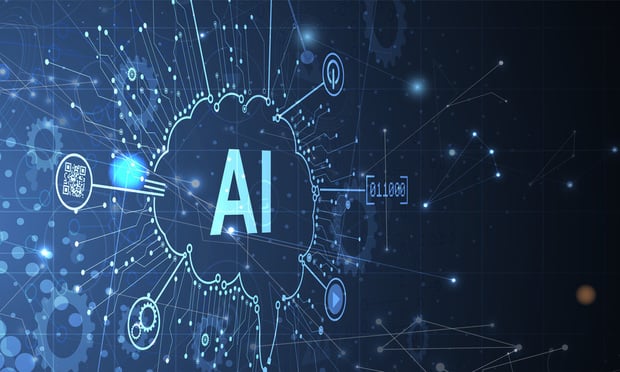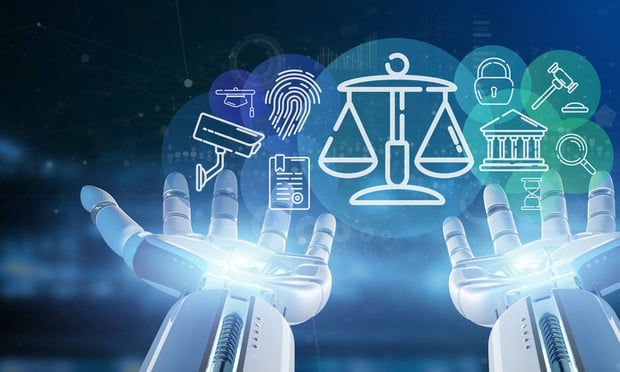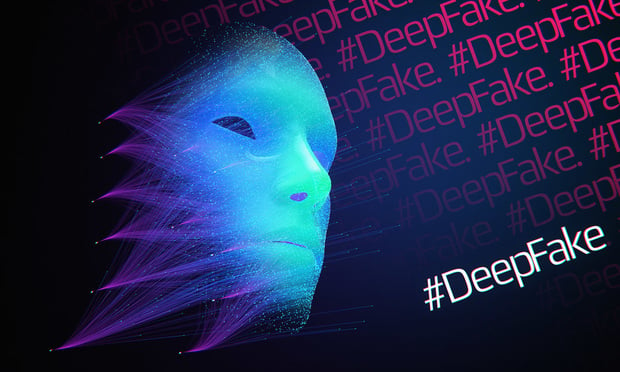Features

Programmers Liability for Alleged Rights Violations Caused By AI Software
AI is designed to accomplish goals specified by and receive directions from a human being. Thus, it has been suggested that either direct or vicarious liability may be applied to hold the human programmer who wrote the software algorithms liable for the damages caused by the AI agent.
Features

FTC Chair Concerned About Dominant Tech Firms
The concentration of dominant technology firms could harm U.S. national interests and global leadership, Federal Trade Commission Chair Lina Khan said in March at a Carnegie Endowment for International Peace event.
Features

Law Firms' Pressing AI Questions
Most of the legal industry has by now boarded the generative artificial intelligence train, filling up conference sessions dedicated to the topic, testing new legal technology solutions and exploring the emerging legal questions that the technology will pose. But most of their questions about generative AI are still unanswered.
Features

AI Needs Its 'Come to Jesus' Moment
It's time to stop the hype, stop talking up AI as if it's the next best thing since sliced bread and prove that it's a useful tool and technology that can actually be used in the actual practice of law.
Features

Decoding DOJ's New 'Justice AI' Initiative
The DOJ is likely to face many practical challenges and novel issues as it begins coding its own algorithm for AI-related enforcement. This article briefly examines three areas of AI-related enforcement where such practical challenges and novel issues may arise.
Features

Artificial Intelligence Redefines Our Defense Against Cyber Threats
The cybersecurity landscape is on the brink of a transformative shift, with predictive analytics and behavioral analysis leading the charge for more resilient and adaptive defenses.
Features

Beyond Language: How Multimodal AI Sees the Bigger Picture
The possibilities for patenting innovative applications of multimodal models across industries are endless.
Features

Deep Fake of CFO on Videocall Used to Defraud Company of $25M
Hackers are using AI to sift large digital data to identify more convincing approaches for their scams as well as weaknesses in weaknesses in software coding or network security.
Features

AI, the Billable Hour and Improving Client Service
The ultimate guardian of the quality of client service is the partners' own judgement but properly utilizing AI can set expectations that will benefit the clients and the firm and end forever the "End of the Billable Hour" stories.
Features

Protecting Technology-Assisted Works and Inventions: Where Does AI Begin?
Just like any new technology, efforts to protect and enforce intellectual property on AI-based technologies are likely to be hampered by a lack of both a unified governing framework and a common understanding of the technology.
Need Help?
- Prefer an IP authenticated environment? Request a transition or call 800-756-8993.
- Need other assistance? email Customer Service or call 1-877-256-2472.
MOST POPULAR STORIES
- The 'Sophisticated Insured' DefenseA majority of courts consider the <i>contra proferentem</i> doctrine to be a pillar of insurance law. The doctrine requires ambiguous terms in an insurance policy to be construed against the insurer and in favor of coverage for the insured. A prominent rationale behind the doctrine is that insurance policies are usually standard-form contracts drafted entirely by insurers.Read More ›
- A Lawyer's System for Active ReadingActive reading comprises many daily tasks lawyers engage in, including highlighting, annotating, note taking, comparing and searching texts. It demands more than flipping or turning pages.Read More ›
- The Brave New World of Cybersecurity Due Diligence in Mergers and Acquisitions: Pitfalls and OpportunitiesLike poorly-behaved school children, new technologies and intellectual property (IP) are increasingly disrupting the M&A establishment. Cybersecurity has become the latest disruptive newcomer to the M&A party.Read More ›
- Abandoned and Unused Cables: A Hidden Liability Under the 2002 National Electric CodeIn an effort to minimize the release of toxic gasses from cables in the event of fire, the 2002 version of the National Electric Code ("NEC"), promulgated by the National Fire Protection Association, sets forth new guidelines requiring that abandoned cables must be removed from buildings unless they are located in metal raceways or tagged "For Future Use." While the NEC is not, in itself, binding law, most jurisdictions in the United States adopt the NEC by reference in their state or local building and fire codes. Thus, noncompliance with the recent NEC guidelines will likely mean that a building is in violation of a building or fire code. If so, the building owner may also be in breach of agreements with tenants and lenders and may be jeopardizing its fire insurance coverage. Even in jurisdictions where the 2002 NEC has not been adopted, it may be argued that the guidelines represent the standard of reasonable care and could result in tort liability for the landlord if toxic gasses from abandoned cables are emitted in a fire. With these potential liabilities in mind, this article discusses: 1) how to address the abandoned wires and cables currently located within the risers, ceilings and other areas of properties, and 2) additional considerations in the placement and removal of telecommunications cables going forward.Read More ›
- Guidance on Distributions As 'Disbursements' and U.S. Trustee FeesIn a recent case from the Bankruptcy Court for the District of Delaware, In re Paragon Offshore PLC, the bankruptcy court provided guidance on whether a post-plan effective date litigation trust's distributions constituted disbursements subject to the U.S. Trustee fee "tax."Read More ›
